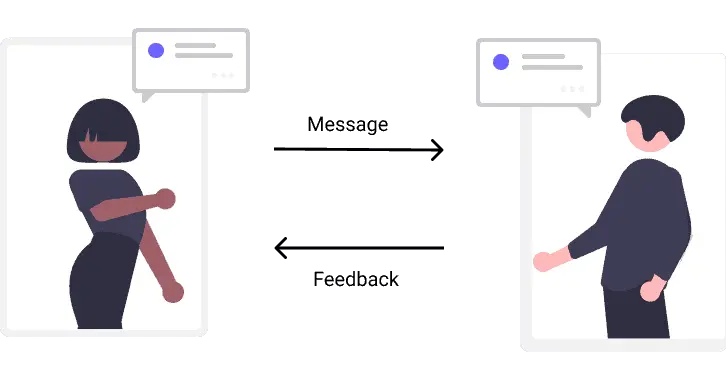Table of Contents
Many theories have been proposed to describe, predict, and understand the behaviors and phenomena of which communication consists. When it comes to communicating in business, we are often less interested in theory than in making sure our communications generate the desired results. But in order to achieve results, it can be valuable to understand what communication is and how it works.
Definitions of Communication
Schramm defines communication as “a tool that makes societies possible and distinguish human from other societies”.
Berelson and Steiner define communication as the transmission of information, ideas, emotions and skills through the use of symbols, words, pictures, figures, and graph.
Rogers says, “Communication is the process of transmitting ideas, information, and attitudes from the source to a receiver for the purpose of influencing with intent”.
Kar defines communication as “all those planned or unplanned processes through which one person influences behaviour of others.”
A more comprehensive suggested definition to define communication would be: “a process of transmitting ideas, information, attitudes (images which we have formulated for ourselves) by the use of symbols, words, pictures, figures from the source (who is the originator of the message) to a receiver, for the purpose of influencing with intent”. So, communication is considered as a process through which senders and receivers of messages interact in a given social context. The concept of communication simply relies on four basic components.

Communication Components
Depending on the previous definitions, we can conclude that communication is a process used to timely and properly exchange information between a sender and a receiver to achieve a desired goal.
Factors in the Definition
- Process: It suggests that the components of interaction are dynamic in nature. They cannot be regarded as unchanging elements in time and space. This simply means that no single aspect of communication can be meaningfully understood apart from the other elements.
- Interaction: It is the process of linking between senders and receivers of the message. The process specifies interaction or linkages between or among countless factors, so that the changes in any set of forces affect the operation of all other processes to produce a total effect. Communication is an attempt to bridge the gap between two individuals through producing and receiving messages which have meaning for both.
- Social Context: Human communication is, to a great extent, influenced by the social context in which it occurs. The context or the situation that consists of a set of rules which govern the origin, flow and effect of the messages.
Communication Model
It describes what is necessary for an act of communication to take place. A model represents the major features and eliminates the unnecessary details of communication.
Functions of Communication Models
- To clarify the scope of human interaction showing it to be a circular, complex, continuous, dynamic, or a coding process.
- To point out where to book and under what conditions to analyse different responses.
- To show the variables in human communication.
- Used as a frame work in researches.
Elements of communication model
Communication is a process of exchanging verbal and non-verbal messages. It is a continuous process. Pre-requisite of communication is a message. This message must be conveyed through some medium to the recipient.
It is essential that this message must be understood by the recipient in same terms as intended by the sender. He must respond within a time frame. Thus, communication is a two way process and is incomplete without a feedback from the recipient to the sender on how well the message is understood by him.
